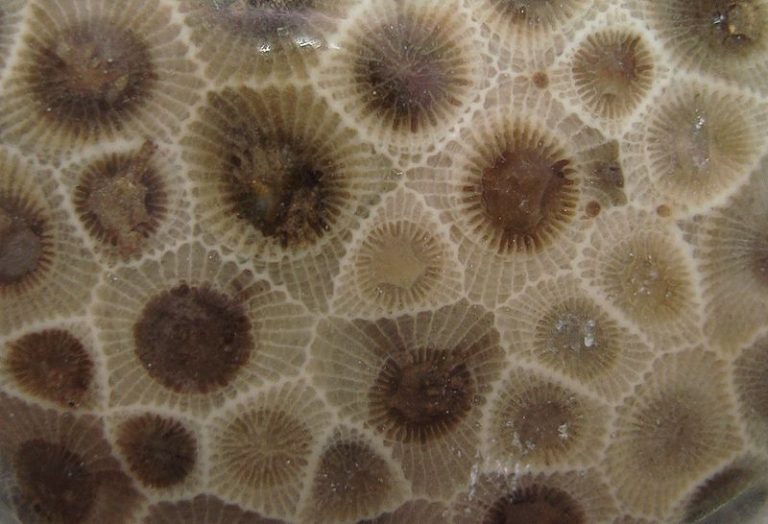By MARK TRIFILIO
Capital News Service
LANSING — The near record- high water shrinking Lake Michigan beaches is uncovering a king’s ransom of Petoskey stones.
If you haven’t heard about the abundance of Petoskey stones now available for hunting, maybe it’s because people keep it to themselves – much like finding a treasure trove of truffles.
The only place in the world to find Petoskey stones is along the state’s Lake Michigan shoreline. The state’s official stone is filled with small circles that look like gray eagle eyes when they’re wet or polished.
For $8, you can buy a sanding kit and polish the stones in about an hour.
Now is a good time to find the popular stones, experts say.
Petoskey stone hunting is at the pinnacle of a long cycle, said Kevin Gauthier, the owner of Korner Gem, a jewelry store in Traverse City specializing in Petoskey stones.
Gauthier, who has written three best-selling books on stones, started collecting them as a child.
“They are so easy to find right now because of the high water,” he said
Every 20 to 30 years, erosion from high water uncovers hidden stones, Gauthier said. When the water levels go back down, people will pick the beaches nearly clean of stones within five years.
They’re easy to find even now because the water reveals them as it rises, he said. Collectors just have to wade into the water a bit.
When beaches are picked clean, it will then be almost two decades or more of hard times for scouting stones, he said.
Gauthier began selling the stones when he was only 9. He stopped collecting stones at beaches years ago.
These days he prefers to go to a beach where stones are hard to find and drop some of his own in the water for others to discover.
“I love to watch the face of a kid light up when they find one,“ he said.
When asked where the best place to find them, he plays it close to the vest.
“Really, the best place to find them is wherever an excavator is working.”
Excavated gravel between Northport and Petoskey will always have Petoskey stones, Gauthier said. But that’s not where he gets most of his.
“Most of the stones I get are from long-forgotten collections in people’s basements.”
Not long ago, Gauthier unwrapped newspapers dated 1968 from around some of those long- forgotten stones.
The internet and tourism have increased entrepreneurial interest.
“Ten years ago, if you went to an art fair it would be me and maybe one other person” selling stones,” Gauthier said. “Today there are 10-15 booths.”
Writing books to teach people about the stones is bittersweet, he said. Every time he writes a book about how and where to find stones, they seem to disappear. Recently he wrote a book about Leland blue stones, and “now all the stones around Leland are gray.”.
But he isn’t too worried about Petoskey stones — they’re still abundant.
Just don’t look for them in a national park, said Andrew Blake, the acting chief ranger of Sleeping Bear Dunes National Lakeshore in Empire. It’s illegal to collect anything within the park and punishable by a steep fine.
“We mainly educate people and give warnings, but occasionally we will issue a ticket,” Blake said. There’s a minimum fine of $325 for removing any fossils or wood.
It’s OK to pick up to 25 pounds of rocks per person at state parks.
Local laws and rules are inconsistent and vary by area. For example, there are no restrictions along Traverse City beaches. But it’s a good idea to check local laws for any beach where you plan to hunt for stones.
Mark Trifilio writes for Great Lakes Echo.
